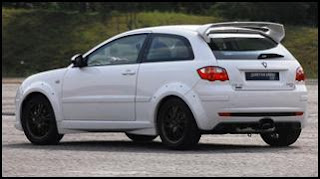SOURCE 1: The Star, StarBizWeek.
Saturday October 31, 2009
Who’s footing the bill?
By IZWAN IDRIS
"THE Government dished out a whole lot of fresh manufacturing goodies after it reviewed the National Automotive Policy (NAP), which can be described as an attempt to improve on the flawed original.
But with car prices being kept at prohibitively high levels, consumers cannot be faulted if they feel like they are the ones footing the bill to keep the industry alive.
“It was a positive NAP for market players, but not so for consumers,’’ MIDF Research analysts Zulkifli Hamzah and Wan Azhar Mustapa said in their commentary on the industry.
Malaysia is set to remain among the countries with the highest numbers of new car buyers after the International Trade and Industry Ministry said on Wednesday that it would keep import duty and exercise duty structures for motor vehicle at the current rates.
Any price reduction, the Government said, would have to come from the industry.
As it is, most analysts as well as market players, including Malaysian Automotive Association president Datuk Aishah Ahmad, expect car prices to remain the same, at least for the rest of the year.
Under the Common Effective Preferential Tariff scheme, Malaysia must eliminate import tariff for CBU (completely built up) vehicles produced in the region before Jan 1, 2010, to comply with the Asean Free Trade Area (Afta) agreement.
Currently, there is a 5% import duty imposed for CBU cars and motorcycles under Afta.
International Trade and Industry Minister Datuk Mustapa Mohamed said the Government was committed to honouring all its international obligations.
There is a chance for a slight price reduction for CBU car imports from neighbouring countries, but the final sticker price will depend on the respective car dealers’ marketing and sales strategy. One CBU model imported from Thailand into Malaysia is the Toyota Camry.
The Camry comparison

(SOURCE 2).
So how much does a Toyota Camry cost here and how does it compare to the rest of the region, and everywhere else, for that matter?
The 2.4 litre automatic version carries a sticker price of about RM260,000 in Singapore, which is higher compared to RM176,000 for a similar unit at local showrooms.
A check through the web revealed that the Camry is priced at about RM160,000 in Jakarta and just above RM150,000 in Thailand.
Meanwhile, a survey on households by CLSA published recently showed that the Camry in Malaysia has the second highest showroom price tag in Asia, behind Singapore, of course, but ahead of Hong Kong.
The car was priced between US$30,000 (RM102,000) and US$34,000 (RM115,000) each in China, Japan, the Philippines, Taiwan and Britain.
The Camry is the cheapest in the United States and Australia, where the sticker price is less than half of the one quoted at local (UMW) dealerships.
Of course, it can be argued that the actual cost of owning a car varied from country to country after taking into account other things such as fuel, parking fees, regular maintenance charges, road tax and insurance.
Also the same car may actually be of a slightly different specification and styling to suit local needs and conditions.
The Camry model is targeted at executives in most markets. In Malaysia, the Camry competes with MPVs and SUVs at a price range of between RM150,00 and RM200,000.
In the entry-level segment, the cheapest new cars in Asia can be bought in China and India. Most entry-level cars in markets surveyed by CLSA are priced below RM35,000 per unit. In Singapore and Hong Kong, the cheapest new car available starts from RM60,000 each.
Despite the relatively high local new car price, MAA expects the annual total industry volume (TIV) to remain above half a million units over the next three years.
Taxing burden
Under the revised NAP, the Government aims to boost foreign direct investments (FDIs) in the sector, but is careful not to antagonise supporters of the national car makers.
“There are seven policy thrusts detailed in the NAP, and we believe it has managed to successfully balance continued protection for Proton, whilst encouraging FDIs,’’ RHB Research Institute said.
The improved tax and incentives given to automotive components would benefit existing local exporters, as well as attract new players to set up shop in the country.
The prohibition of imported used parts will also force consumers to switch to using products by original equipment manufacturer (OEMs) and replacement equipment makers (REMs).
Meanwhile, there is a plan to gradually phase out older cars from Malaysian roads and to implement more rigorous safety checks on vehicles. However, no deadlines were given.
The MIDF analysts expect the development of the end-of-life vehicle (ELV) policy to be a slow process, given the “sensitive” nature of the issue.
One thing for sure, OEM and REM parts will cost more compared to used items and Malaysians will have to dig deeper into their pockets to maintain their vehicles.
And the prohibitively high sticker price for new cars out there continue to put better quality cars out of the reach of most Malaysians.
Based on current duty and tax structure, the effective rate for the Toyota Camry 2.4 stood at 185% of the CBU price. Basically, more than half of the sticker price at the local dealerships is attributed to duties and taxes.
Exercise and import duties collected from car sales contributed billions to the Government’s coffers every year, with some estimates putting it in the range of between RM6bil and RM7bil annually.
However, it can be argued that the high prices limit the industry’s growth potential. And it is unfair to car buyers to continue shouldering the financial burden of ensuring that domestic car makes remain competitively priced."
END OF SOURCE.
SOURCES:
1) http://biz.thestar.com.my/news/story.asp?file=/2009/10/31/business/5008187&sec=business
2) http://www.toyota.com.my/index.aspx?cat=models§=camry&subsect=gallery
That's all folks, thanks for having the time and patience to read this WONDERFULLY WRITTEN ARTICLE. Again, I REALLY REALLY WISH I CAN WRITE SUCH GOOD ARTICLE. But Not at the moment...


















+in+this+picture+of+a+media+drive+for+the+Mazda+626+in+1981.jpg)











